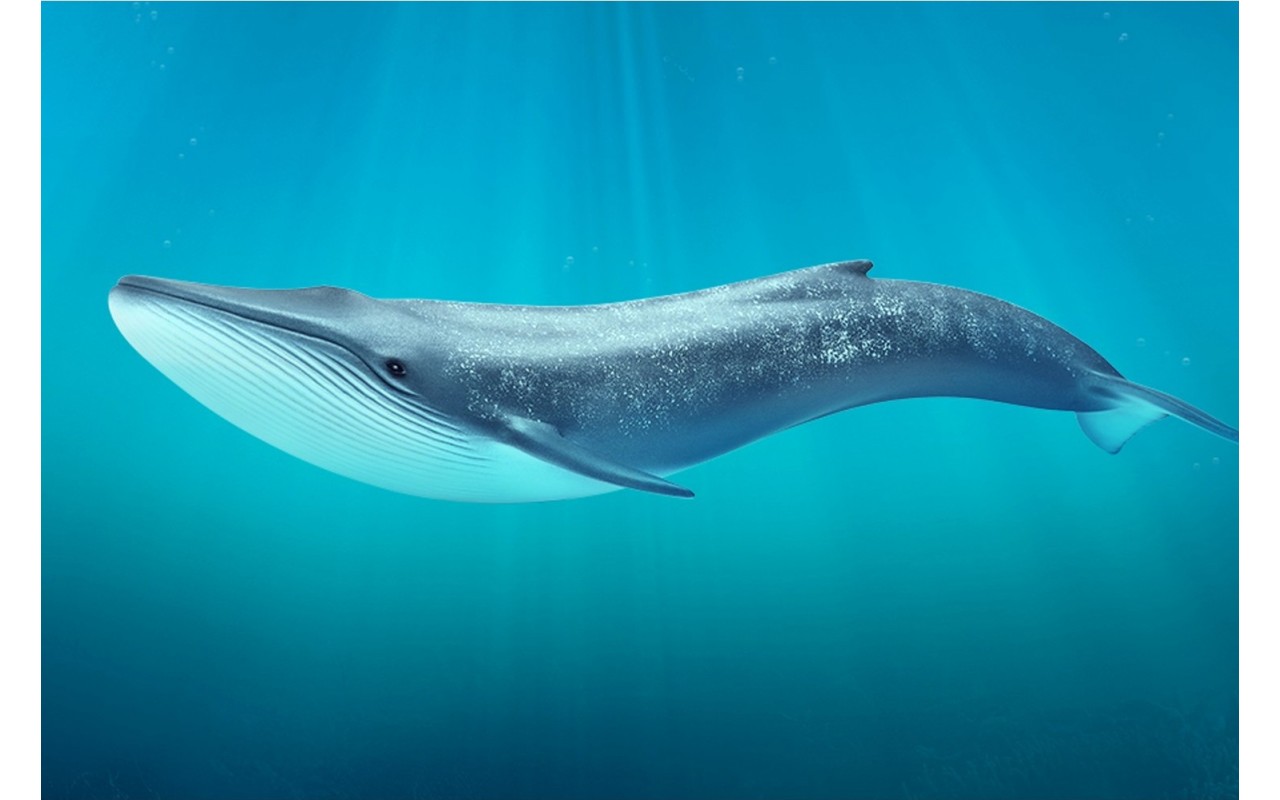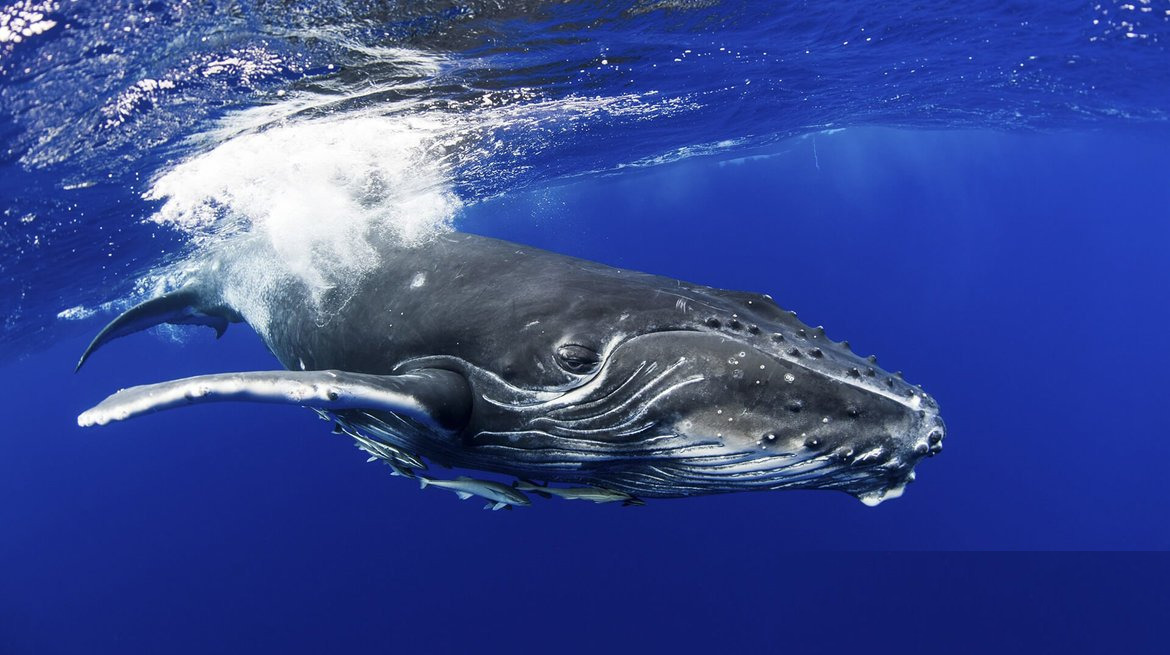Whales are among the most majestic and fascinating creatures on Earth, captivating the imagination of people around the world with their immense size, intelligence, and mysterious lives beneath the ocean’s surface. These magnificent marine mammals belong to the cetacean family, which also includes dolphins and porpoises. Unlike fish, whales are warm-blooded, breathe air through lungs, and nurse their young with milk. The diversity among whale species is immense, with sizes ranging from the relatively small dwarf sperm whale, which grows to about 8.9 feet, to the colossal blue whale, which can reach lengths of up to 100 feet and weigh as much as 200 tons.
The blue whale, in particular, holds the title of the largest animal ever known to have lived on Earth, surpassing even the largest dinosaurs. Its heart alone can weigh as much as a car, and its massive tongue can weigh as much as an elephant. Despite their enormous size, blue whales feed primarily on tiny organisms called krill, consuming up to four tons of krill per day during feeding season. This phenomenon highlights the wonder of nature’s balance, as one of the largest animals on the planet relies on some of the smallest for sustenance.

Whales are broadly classified into two main suborders: baleen whales (Mysticeti) and toothed whales (Odontoceti). Baleen whales, such as the humpback, blue, and gray whales, possess baleen plates in their mouths that they use to filter small organisms like plankton and krill from the water. These plates are made of keratin, the same material found in human hair and nails. In contrast, toothed whales, like sperm whales, orcas, and dolphins, have teeth and prey on larger animals such as fish, squid, and seals. The sperm whale, for instance, is known for its deep dives to hunt giant squid in the dark depths of the ocean.

The intelligence of whales, especially within the toothed whale group, has long intrigued scientists. Orcas, also known as killer whales, are particularly famous for their complex social structures and sophisticated hunting techniques. They live in matriarchal pods, where knowledge and behaviors are passed down through generations. These pods exhibit different “cultures,” meaning they have unique hunting strategies, communication methods, and even dialects that set them apart from other orca groups. In captivity, orcas have demonstrated problem-solving abilities and communication with humans, though the ethics of keeping these large, intelligent animals in confinement is a subject of growing controversy.
Whales communicate using a variety of sounds, including clicks, whistles, and low-frequency calls. Baleen whales are known for their hauntingly beautiful songs, especially the humpback whale. These songs can travel for miles underwater and are thought to play a role in mating rituals, though scientists are still uncovering the full purpose of these vocalizations. In fact, the songs of humpback whales have been recorded in various oceans around the world, revealing patterns that can change over time, with different populations sometimes adopting similar songs, much like a global musical trend.

Migration is another remarkable aspect of whale behavior. Many whale species undertake long migrations, traveling thousands of miles between feeding and breeding grounds. Gray whales, for example, hold the record for the longest migration of any mammal, traveling up to 12,000 miles round-trip between their summer feeding grounds in the Arctic and their winter breeding grounds off the coast of Mexico. These migrations are perilous, as whales must navigate through waters filled with threats such as predators, ship traffic, and increasingly, the effects of climate change and human activity.

Whaling, the practice of hunting whales for their meat, blubber, and oil, has had a profound impact on whale populations throughout history. In the 19th and early 20th centuries, industrial whaling decimated many species, bringing some, like the blue whale, to the brink of extinction. The oil derived from whale blubber was once used to light lamps and make soap, while baleen was used in products like corsets and umbrellas. The International Whaling Commission (IWC) was established in 1946 to regulate whaling and ensure the conservation of whale populations. Today, commercial whaling is banned in most parts of the world, though some countries, such as Japan, Norway, and Iceland, continue to hunt whales under the guise of scientific research or cultural tradition.

Conservation efforts have helped some whale populations recover, but many species remain endangered or vulnerable. The North Atlantic right whale, for example, is critically endangered, with fewer than 400 individuals remaining. These whales face numerous threats, including entanglement in fishing gear, ship strikes, and habitat degradation. Climate change is also affecting whale populations by altering the availability of prey and changing migration patterns. Warmer ocean temperatures can reduce the abundance of krill, the primary food source for many baleen whales, while melting sea ice can disrupt the feeding grounds of species like the bowhead whale.
In recent years, ecotourism has emerged as a way to promote whale conservation while providing economic benefits to coastal communities. Whale watching, a popular activity in places like Alaska, Australia, and Iceland, allows people to observe these majestic creatures in their natural habitats. When conducted responsibly, whale watching can raise awareness about the importance of protecting marine ecosystems and inspire a deeper appreciation for the ocean’s biodiversity. However, it is crucial to ensure that whale-watching activities do not disturb the animals or their habitats, as too much human interaction can cause stress and disrupt natural behaviors.

The relationship between humans and whales has evolved significantly over time. Once viewed primarily as a source of resources, whales are now recognized for their intrinsic value and their role in maintaining healthy marine ecosystems. As apex predators, whales help regulate the populations of their prey, contributing to the balance of the ocean food web. Their large bodies also store carbon, and when whales die, their carcasses sink to the seafloor, providing nutrients for deep-sea ecosystems. This process, known as “whale fall,” supports a unique community of organisms that can rely on a single whale carcass for decades.
Scientific research on whales continues to uncover new insights into their behavior, biology, and the challenges they face. Advances in technology, such as satellite tracking and underwater drones, have made it easier to study whales in the wild, providing valuable data on their migration patterns, feeding habits, and responses to environmental changes. Additionally, the study of whale acoustics has revealed the complex ways in which these animals use sound to communicate, navigate, and find food in the vast and often dark ocean depths.

Despite the progress made in whale conservation, much work remains to be done. Protecting whale habitats, reducing ship strikes, and preventing entanglement in fishing gear are all critical steps in ensuring the survival of these incredible animals. Furthermore, addressing the broader issue of climate change is essential to safeguarding the ocean ecosystems that whales depend on. As ocean temperatures continue to rise and sea ice continues to melt, the future of many whale species hangs in the balance.
Whales are not only remarkable for their size and intelligence but also for their ability to evoke awe and wonder in those who encounter them. Whether through the lens of a camera on a whale-watching tour or through the pages of scientific research, whales continue to inspire and captivate us. They serve as powerful reminders of the beauty and fragility of the natural world, and their survival depends on our collective efforts to protect the oceans and the creatures that call them home.

The story of the whale is, in many ways, a story of resilience, adaptation, and hope. Through ongoing conservation efforts, there is a possibility that future generations will continue to witness the grandeur of these ocean giants, swimming freely in seas that are healthy, vibrant, and thriving.